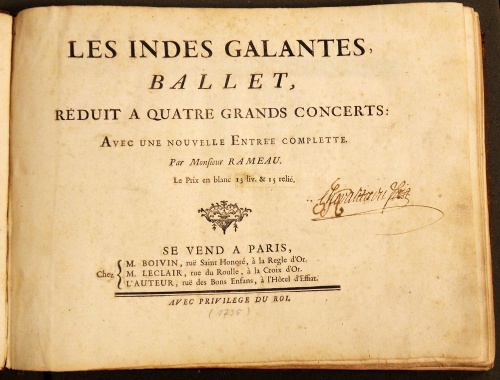A semiotics of sex roles in French society was played out in 18th- and 19th-century ballet by projecting it onto imaginary Native American societies.
In the 18th century, sauvage culture became a canvas for the projection of utopian sentiment with subtle social texturing, allowing the expression of fantasies of less restrictive sexual roles; in the 19th century, sauvagerie became grotesque and increasingly unrefined, shifting the emphasis from cultural to racial difference and affirming the status quo.
This according to “Sauvages, sex roles, and semiotics: Representations of Native Americans in the French ballet, 1736–1837” by Joellen A. Meglen (Dance chronicle XXIII/2 [2000] pp. 87–132; XXIII/3 [2000] pp. 275–320).
Above and below, Rameau’s Les Indes galantes (1735).
Related article: Rameau’s American dancers




